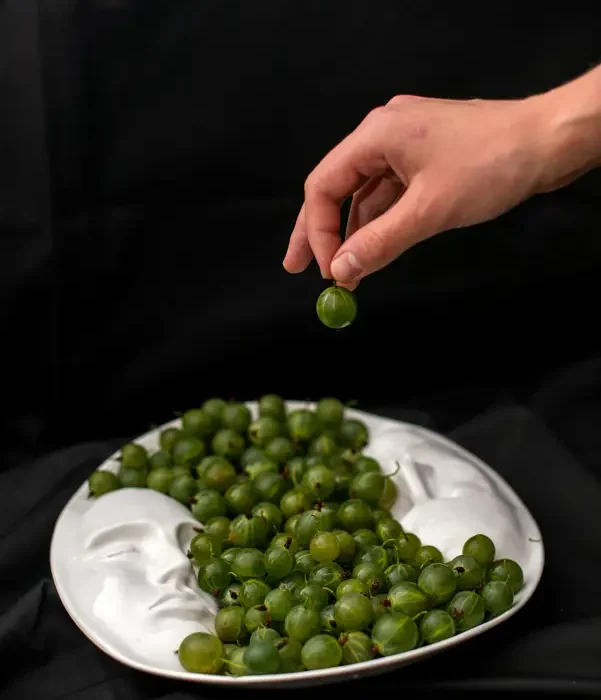Sangria, a vibrant and refreshing wine punch, holds a captivating history interwoven with culture and tradition. Its origins are somewhat shrouded in mystery, with several competing narratives vying for the title of birthplace. While some claim a Roman ancestry, pointing to ancient recipes featuring wine and fruit, the most widely accepted origin story places sangria firmly in Spain, likely emerging sometime during the 19th century. The exact date remains elusive, but its popularity exploded in the early 20th century, coinciding with the rise of tourism and the global spread of Spanish culture.
Initially, sangria was a humble drink, a way to make inexpensive wine more palatable by adding readily available fruits and sweeteners. This practicality, combined with its inherent deliciousness, quickly made it a staple at Spanish gatherings, from family meals to boisterous fiestas. The recipe varied widely from region to region and household to household, reflecting the diverse agricultural landscape of Spain and the unique preferences of its people. This inherent adaptability is one of the reasons sangria remains so beloved – it’s easily personalized to suit individual tastes.
Beyond Spain, sangria’s influence has spread globally. It’s become a popular summer beverage worldwide, enjoying particular popularity in the United States, where it’s often associated with warm weather and outdoor celebrations. While the classic Spanish versions are still highly regarded, countless variations have emerged, incorporating fruits like mangoes, pineapples, and even peaches, reflecting the diverse culinary landscapes of different countries. Statistics show a significant increase in sangria consumption during the warmer months, with sales peaking in June, July, and August. This demonstrates its strong association with summertime gatherings and outdoor enjoyment.
The cultural significance of sangria extends beyond its taste. It’s often seen as a symbol of hospitality and conviviality, a drink meant to be shared and enjoyed with friends and family. Its vibrant colors and fruity aromas evoke a sense of celebration and warmth, making it a perfect accompaniment to social gatherings and festive occasions. From intimate gatherings to large-scale parties, sangria serves as both a delicious refreshment and a potent symbol of togetherness, cementing its place as a beloved beverage across cultures and generations. This recipe aims to capture the essence of this classic drink, providing you with a guide to crafting the best homemade sangria, a drink worthy of any celebration.
Ingredients and Measurements
This recipe yields approximately 6-8 servings of refreshing, delicious sangria. The beauty of sangria lies in its adaptability, so feel free to adjust the fruit and liquor ratios to your personal preference. However, sticking to the measurements below will ensure a well-balanced and flavourful drink.
The Wine: The foundation of any great sangria is the wine. We recommend using a dry red wine, such as a Rioja, Tempranillo, or Garnacha. These wines offer a robust structure that can stand up to the sweetness of the fruit and the strength of the liquor. Avoid overly tannic wines, as they can become bitter when infused with fruit. Use 1 bottle (750ml) of good quality dry red wine.
The Brandy: Brandy adds a lovely depth and warmth to the sangria. A Spanish brandy, like a Solera, is traditional and pairs beautifully with the red wine, but any good quality brandy will do. We recommend using 1/2 cup (120ml) of brandy. You can adjust this amount depending on your desired strength; start with less and add more to taste as needed.
The Orange Liqueur: A touch of orange liqueur adds a layer of citrusy sweetness and aroma. Cointreau or Triple Sec are excellent choices. Use 1/4 cup (60ml) of orange liqueur. Again, adjust this to your preference. If you prefer a less sweet sangria, reduce the amount or omit entirely.
The Fruit: The fruit is where you can truly express your creativity! We recommend a combination of fruits for a balanced flavour profile. Use the following quantities as a guideline, but feel free to substitute with your favorite fruits:
- 1 large orange, thinly sliced: Provides a bright citrusy flavour and beautiful colour.
- 1 large lemon, thinly sliced: Adds a tartness that balances the sweetness.
- 1 cup (approximately 120g) of strawberries, hulled and halved or quartered: Adds a juicy sweetness.
- 1 cup (approximately 120g) of green apples, cored and diced: Provides a crisp, refreshing element.
- 1/2 cup (approximately 60g) of fresh raspberries: Contributes a delicate sweetness and vibrant color.
Optional Additions: To further enhance your sangria, consider adding:
- A cinnamon stick: Adds a warm, spicy note.
- 2-3 star anise: Provides a subtle licorice flavor.
- 1/4 cup (60ml) of orange juice (freshly squeezed is best): Boosts the citrusy notes.
- A splash of club soda or sparkling water: Adds a bit of fizz and lightness before serving.
Important Note: Always use fresh, high-quality ingredients for the best tasting sangria. The quality of your ingredients directly impacts the final taste. Prepare the fruit ahead of time to allow the flavours to meld and infuse into the wine. Allow at least 2 hours of chilling, but preferably 4-6 hours, or even overnight, for optimal flavour development.
Equipment List
Creating the perfect homemade sangria requires not only the finest ingredients but also the right tools. This section details the equipment you’ll need, ranging from essential items to those that will enhance your sangria-making experience. Having the correct equipment on hand will ensure a smooth and efficient process, allowing you to focus on the deliciousness of your creation.
Large Pitcher (2-gallon capacity): This is arguably the most crucial piece of equipment. A large pitcher is essential for properly mixing and chilling the sangria. A 2-gallon pitcher allows for sufficient space for the fruit, wine, and other liquids, preventing overflow and ensuring even distribution of flavors. Glass is ideal, as it doesn’t affect the taste of the sangria, although a high-quality food-grade plastic pitcher is also acceptable. Avoid using metal pitchers, as they can react with some of the ingredients.
Measuring Cups and Spoons: Precision is key when it comes to balancing the flavors in your sangria. Having accurate measuring tools, such as a set of nested measuring cups (1 cup, ½ cup, ⅓ cup, ¼ cup) and a set of measuring spoons (1 tablespoon, 1 teaspoon, ½ teaspoon), is crucial for consistent results. Invest in a good quality set for accurate measurements, as this directly impacts the final flavor profile.
Juicer (Citrus Juicer or Manual): While you can manually juice oranges, lemons, and limes, a citrus juicer significantly speeds up the process and extracts more juice. A manual juicer is a great option for smaller batches, while an electric juicer is ideal for larger quantities or if you’re making sangria frequently. Ensure your juicer is easy to clean, as leftover pulp can be difficult to remove.
Cutting Board and Sharp Knife: Preparing the fruit is a significant part of the sangria-making process. A sturdy cutting board, preferably made of wood or plastic, provides a stable surface for cutting. A sharp knife is essential for efficiently and safely chopping the fruit into manageable pieces. Using a dull knife is dangerous and can lead to unevenly sized fruit pieces, affecting the overall texture and infusion of flavors.
Wooden Spoon or Spatula: Once all the ingredients are assembled, you’ll need a wooden spoon or spatula to gently stir the sangria, ensuring that all the flavors are evenly distributed and the fruit is submerged. Avoid using metal utensils, as they might react with certain ingredients, affecting the taste and appearance of your sangria. A long-handled spoon is preferable for reaching the bottom of the pitcher easily.
Ice Bucket or Large Bowl: Chilling the sangria is vital for optimal enjoyment. A large ice bucket or bowl will allow you to submerge the pitcher in ice water, quickly chilling the sangria before serving. Consider using ice packs alongside ice for even faster chilling, especially in warmer climates.
Serving Glasses: Finally, you’ll need appropriate serving glasses. Wine glasses, highball glasses, or even mason jars can be used, depending on your preference and the style of sangria you’re serving. Choose glasses that complement the overall presentation of your sangria.
Preparation of Fruits for Sangria
The success of a truly exceptional sangria hinges significantly on the quality and preparation of its fruit components. Don’t underestimate this stage; careful preparation ensures optimal flavor infusion and a visually appealing final product. We’ll be using a vibrant mix of fruits, each contributing unique characteristics to the overall taste and texture.
We’ll start with oranges (2 large). Begin by thoroughly washing them under cold running water to remove any pesticides or dirt. Then, using a sharp knife, carefully peel the oranges completely, avoiding as much pith (the white, bitter part) as possible. The pith can impart a bitter taste to your sangria, so meticulous peeling is key. Once peeled, cut each orange into roughly 1/2-inch thick slices. Avoid overly small pieces, as they can become mushy and unattractive.
Next, we’ll prepare lemons (1 large). Similar to the oranges, wash them thoroughly. Then, roll the lemon firmly on a countertop to help soften it and release its juices. Cut the lemon in half and then slice each half into thin semi-circles, about 1/8-inch thick. The thinner slices will release more flavor and aroma into the sangria. Don’t discard the lemon seeds; they contain beneficial oils that will add complexity to the final drink. However, remove any large, visible pieces of pith.
Now for the apples (2 medium, such as Granny Smith or Honeycrisp). Choose firm apples that hold their shape well. Wash them thoroughly and remove the cores using an apple corer or a sharp paring knife. Cut the apples into bite-sized chunks, about 1/2-inch to 3/4-inch in size. To prevent browning, immediately toss the cut apples with a tablespoon of lemon juice. This will help preserve their color and prevent enzymatic browning.
For a touch of sweetness and visual appeal, we’ll add peaches (2 medium, ripe but firm). Wash the peaches thoroughly and remove the fuzz using a vegetable peeler or by gently rubbing them with a damp cloth. Cut each peach in half, remove the pits, and then slice each half into roughly 1/2-inch thick wedges. Ripe but firm peaches are ideal; overripe peaches can become too soft and mushy in the sangria.
Finally, we’ll incorporate fresh berries (1 cup mixed berries – strawberries, raspberries, blueberries). Gently wash the berries and remove any stems or leaves. For larger strawberries, you can halve or quarter them, but leave the smaller berries whole. Avoid over-washing the berries, as this can damage their delicate skins and lead to a loss of flavor.
Once all your fruits are prepared, carefully combine them in a large pitcher or bowl. Gently toss the fruits together to ensure even distribution. You are now ready to proceed with the next step of making your delicious homemade sangria!
Mixing the Sangria
Now for the fun part: assembling your delicious homemade sangria! This process is straightforward, but a few key steps will elevate your drink from good to unforgettable. Remember, the beauty of sangria lies in its adaptability; feel free to adjust the fruit and liquor ratios to your personal preference after mastering the basic recipe.
Begin by preparing your fruit. We’ll be using a vibrant mix of oranges, lemons, and apples. For this recipe, you’ll need:
- 1 large orange, thinly sliced
- 1 large lemon, thinly sliced
- 1 large apple (such as Granny Smith or Fuji), cored and cut into bite-sized pieces
Important: Avoid using overly ripe or bruised fruit, as this can affect the taste and appearance of your sangria. The goal is bright, fresh flavors.
Next, we’ll combine the fruit with the alcohol. In a large pitcher (at least 2 liters capacity), gently combine:
- 750ml bottle of dry red wine (a Rioja or Tempranillo works wonderfully).
- 125ml of brandy (a good quality Spanish brandy is traditional, but other brandies work well too).
- 100ml of orange liqueur (such as Cointreau or Triple Sec). Note: If you prefer a less sweet sangria, reduce the amount of orange liqueur or omit it entirely.
Stir gently to ensure the fruit is evenly distributed throughout the liquid. Avoid vigorous stirring, as this can bruise the fruit and make the sangria cloudy.
Now, let’s add the sweetness and a touch of fizz. Add:
- 100ml of orange juice (freshly squeezed is best, but bottled works in a pinch).
- 50ml of sugar syrup (or to taste). Tip: To make sugar syrup, simply combine equal parts sugar and water in a saucepan and heat gently until the sugar dissolves completely. Allow to cool completely before adding to the sangria.
- 100ml of club soda or sparkling water. Adding this right before serving keeps the sangria bubbly and refreshing.
Stir gently once more, then cover the pitcher and refrigerate for at least 4 hours, or preferably overnight. This is crucial: Allowing the sangria to chill and infuse flavors will dramatically improve its taste. The longer it sits, the better the flavors will meld.
Before serving, give your sangria a final gentle stir. Garnish with extra fruit slices, fresh mint sprigs, or orange zest for an extra touch of elegance. Serve chilled in wine glasses or tumblers filled with ice. Enjoy responsibly!
Chilling Time: The Key to Sangria Perfection
The chilling process is arguably the most crucial step in crafting the perfect homemade sangria. It’s not just about lowering the temperature; it’s about allowing the flavors to meld and deepen, creating a harmonious and refreshing drink. Rushing this stage will result in a less flavorful and potentially unbalanced sangria.
Optimal Chilling Time: For the best results, we recommend chilling your sangria for at least 4 hours, and ideally, overnight (8-12 hours). This extended chilling period allows the fruit to release its juices fully, infusing the wine with vibrant aromas and sweetness. The longer it chills, the more intense the flavors become. Think of it as a slow, delicious infusion.
The Chilling Method: There are several ways to chill your sangria effectively. The most straightforward method involves placing the pitcher or container directly into the refrigerator. Ensure the container is airtight to prevent any unwanted absorption of refrigerator odors. If you’re short on time, you can use a combination of ice and cold water in a larger bowl, placing the sangria container inside. This method provides faster chilling, but requires constant monitoring to prevent excessive dilution.
Ice Considerations: While using ice directly in the sangria might seem like a quick solution, it can significantly dilute the drink and weaken its flavor profile. Avoid adding ice directly to the sangria before serving. Instead, use ice cubes in individual glasses at the time of serving to maintain the desired temperature and concentration of flavor. If you must use ice in the pitcher, opt for larger ice cubes that melt more slowly.
Temperature Monitoring: The ideal serving temperature for sangria is between 40-45°F (4-7°C). Using a refrigerator thermometer can help you monitor the temperature accurately, especially if you’re chilling the sangria for a longer duration. This precise temperature ensures the sangria is refreshingly cold without being icy or overly diluted. Avoid freezing the sangria, as this can damage the delicate flavors and potentially cause the fruit to become mushy.
Pre-Chilling Ingredients: While chilling the final sangria mixture is essential, consider pre-chilling your ingredients as well. Chill the wine, fruit juices, and even the fruit itself for at least 30 minutes before combining them. This helps achieve the desired temperature more quickly and ensures a consistently cold drink throughout. Pre-chilled ingredients contribute towards a smoother, more refreshing final product.
Patience is Key: Remember, the chilling process is an investment in flavor. Resist the urge to rush this stage. The reward is a richly flavored, perfectly balanced sangria that will impress your guests and leave them wanting more. Enjoy the process and savor the delicious result of your patience.
Serving Suggestions
Your homemade sangria is ready to be enjoyed! But how you serve it can significantly impact the overall experience. Here are some suggestions to elevate your sangria from simply delicious to truly unforgettable.
Chill it properly: The ideal serving temperature for sangria is between 40-45°F (4-7°C). Don’t just pop it in the fridge right before serving; plan ahead. Chill your sangria for at least 4 hours, or preferably overnight, to allow the flavors to meld and reach their peak refreshment. Over-chilling can dull the fruit’s flavors, so avoid freezing.
Serving vessels matter: Avoid serving sangria in anything too small or too large. A classic sangria pitcher, preferably glass or clear resin to showcase the vibrant colors, is ideal. If you’re serving a crowd, consider using multiple pitchers to ensure easy access. For individual servings, elegant wine glasses or large tumblers work beautifully. Avoid using anything that might react with the wine, like metal pitchers.
Garnishing for visual appeal: Sangria is a feast for the eyes as well as the palate. Enhance its visual appeal with some thoughtful garnishes. Use fresh fruit slices – oranges, limes, lemons, and berries – to rim the glasses or create a colorful floating garnish within the pitcher. A few sprigs of fresh mint or rosemary add a touch of elegance and aromatic complexity. Consider using edible flowers like pansies or violas for an extra special touch, but ensure these are sourced from a reputable supplier and are safe for consumption.
Quantities and serving sizes: A standard pitcher (approximately 2 liters) of sangria will comfortably serve 6-8 people. For a larger gathering, calculate the amount needed based on your guest count and desired serving size. A good rule of thumb is to allow for 2-3 servings per person. If you’re unsure, it’s always better to err on the side of caution and make a little extra.
Accompaniments: Sangria pairs wonderfully with a variety of foods. Consider offering tapas-style appetizers like Manchego cheese, olives, marinated artichoke hearts, or Spanish chorizo. For a heartier meal, grilled meats, seafood paella, or even a simple charcuterie board will complement the sangria perfectly. Avoid overly spicy foods that might clash with the fruitiness of the sangria.
Ice: While crucial for chilling, avoid over-icing your sangria, as it can dilute the flavor. Use large ice cubes or even ice spheres to slow down the melting process. Consider adding a few frozen fruit pieces to the pitcher for extra cooling power and a delicious burst of flavor as they melt.
Presentation is key: Take the time to present your sangria beautifully. A clean pitcher, attractive glassware, and thoughtful garnishes will enhance the overall dining experience. Remember, sangria is a social drink, best enjoyed with good company and a relaxed atmosphere. Enjoy responsibly!
Recommendations for The Best Homemade Sangria Recipe
This delightful homemade sangria recipe is best enjoyed chilled and served in a large pitcher, allowing guests to easily serve themselves. Consider using a beautiful glass pitcher to enhance the presentation. For a more elegant touch, garnish each serving with a fresh fruit slice, such as orange or lemon, or a sprig of mint. Individual servings in wine glasses with ice are also perfect for a more formal setting.
To elevate the sangria experience, consider offering a variety of accompaniments. Crunchy tapas, such as patatas bravas (spicy potatoes), gambas al ajillo (garlic shrimp), or manchego cheese with olives, pair wonderfully with the fruity and refreshing sangria. For a heartier option, consider serving grilled meats or fish, particularly those with bold flavors that can stand up to the sangria’s sweetness and acidity. Alternatively, a selection of fresh fruits, like berries or melon, can provide a light and refreshing contrast.
Storage is crucial for maintaining the quality of your sangria. Leftover sangria should be stored in an airtight container in the refrigerator. It’s best consumed within 2-3 days to prevent the fruit from becoming overly soft and the flavors from diminishing. Avoid storing it for extended periods, as the quality and taste will significantly decrease. If you notice any signs of spoilage, such as an off-putting smell or unusual appearance, discard it immediately.
Nutritional information (per serving, approximate, will vary based on ingredients and serving size): Calories: 200-300 (highly variable depending on the type and amount of fruit and alcohol used). Carbohydrates: 20-30g (primarily from fruit). Sugar: 15-25g (naturally occurring sugars from fruit and added sugar if using sweeteners). Fat: Negligible. Protein: Negligible. Please note that these are estimates and may differ according to your specific recipe modifications. Alcohol content will also significantly impact the overall calorie count.
For a lower-calorie version, consider reducing the amount of fruit or using lower-sugar fruits such as berries. You can also use a lower-sugar wine or even opt for a non-alcoholic version using sparkling grape juice as a base. Remember to adjust the sweetness according to your preference by adding less or more sugar or a sugar substitute. Experiment with different fruit combinations to create your signature sangria. Adding a splash of sparkling water or club soda can also lighten the drink and add some fizz.
Enjoy responsibly! Sangria is a delightful beverage best enjoyed in moderation. Remember to always drink responsibly and never drink and drive. This recipe is intended for adults only. Please drink responsibly and be mindful of your alcohol consumption.





